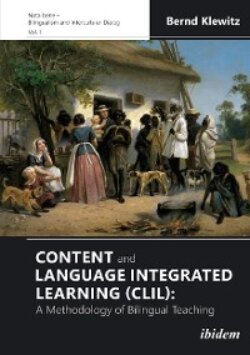Читать книгу Content and Language Integrated Learning (CLIL): A Methodology of Bilingual Teaching - Bernd Klewitz - Страница 5
Chapter 1
Bilingual Children Vignette “A Family Experiment”
ОглавлениеIn the South of Germany, a young family has gone bilingual. Four-year-old Ava has already developed a ready understanding in English and, from time to time, expresses herself in words and short phrases in what is going to be her second language (L2). Her brother Paul has just celebrated his first birthday and listens to his father’s English attentively. Peter, who attended a High School in California and passed his IB there, speaks to his children only in English, whereas his wife Sophia uses German in family conversations. Frequently, the grandfather, an English teacher himself, on his visits addresses the children in English as well, in order to “support” the English atmosphere a little. But recently he was taken aback when Ava, with a certain panache, asked him: “Warum sprichst Du Englisch mit mir, Opa?” Obviously, his grandchild had noticed that he every so often switched between languages and did not trust him in his role as a genuine English speaker.
The example raises questions like these: Does bilingualism really work at an early age? How does it develop in the long run? Can it eventually result in a balanced command of two languages? If we take these questions further and to the level of language acquisition and learning in a school context, we would have to scrutinize bilingual programs like immersion and its European counterpart CLIL (Content and Language Integrated Learning). With regards to terminology, “bilingual” might appear as a misnomer or, at least, ambiguous, because it can either refer to the (pedagogical) aim to enhance a native-like command of two languages or the strategy of using two languages in the process of instruction. In any case, it makes sense to disentangle or even dismantle some myths and legends of bilingualism.
